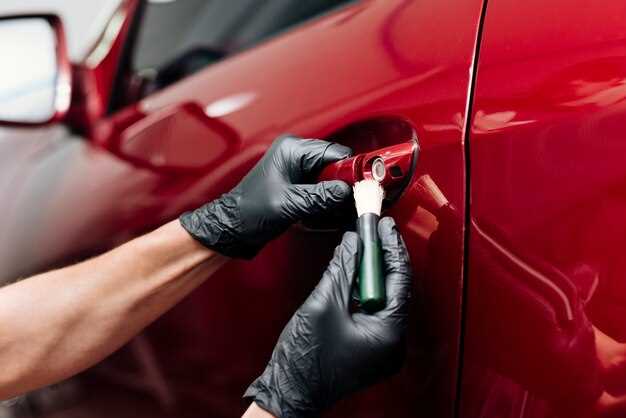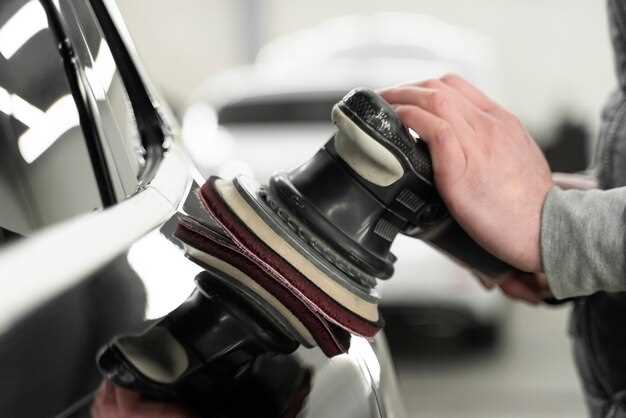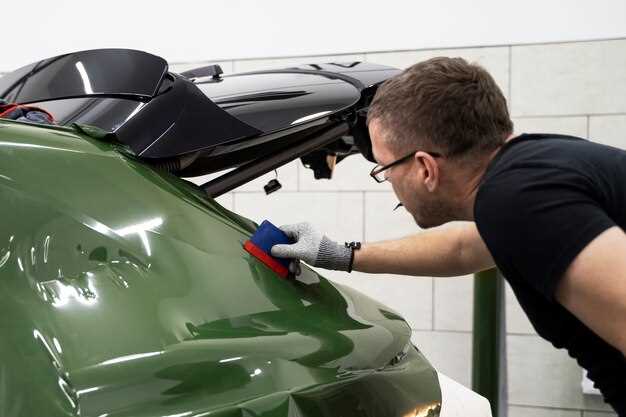
Paint correction is a meticulous process aimed at restoring the original finish of a vehicle’s paintwork. Over time, exposure to environmental factors, such as UV rays, road grime, and other contaminants, can lead to imperfections like swirls, scratches, and oxidation. These blemishes not only compromise the aesthetic appeal of a car but can also diminish its value. By employing specialized tools and techniques, paint correction can effectively address these issues, resulting in a rejuvenated surface that looks almost as good as new.
The benefits of paint correction extend beyond mere appearance. A well-executed correction can enhance the vehicle’s longevity by providing a protective barrier against future damage. Additionally, paint correction can make the subsequent application of protective coatings, such as ceramic or wax, more effective. This not only increases the durability of the finish but also makes maintenance easier over time.
Understanding the intricacies of paint correction is crucial for any car enthusiast or owner invested in maintaining their vehicle’s appearance. This article will delve into the stages of paint correction, the techniques used, and the various benefits it offers, helping you make informed decisions about your vehicle’s care.
Identifying Common Paint Defects: Scratches, Swirls, and Oxidation
Proper identification of paint defects is crucial in the paint correction process. The three most common types of defects are scratches, swirls, and oxidation, each requiring specific attention and correction techniques.
Scratches are shallow lines or grooves that disrupt the uniform surface of the paint. They can occur from contact with abrasive materials, improper washing techniques, or accidents. To identify scratches, carefully inspect the surface under natural light, looking for lines that are visible from certain angles. They vary in depth and can often be felt with a fingernail. Different types of scratches, such as surface or deeper scratches, will necessitate different correction methods.
Swirls are circular, often spider-web-like marks that occur due to improper washing or buffing techniques, typically caused by using dirty or abrasive towels and pads. They may be less noticeable under certain lighting conditions but become prominent when viewed at angles in the sunlight. Swirls can significantly detract from the clarity and shine of the paint, making paint correction essential for restoring a vehicle’s appearance.
Oxidation occurs when the paint is exposed to environmental elements over time, leading to a dull, faded appearance. This defect is common on older vehicles or those that have not been properly maintained. Oxidation is characterized by a chalky texture and can be tested by rubbing your hand over the surface; if it feels rough or powdery, oxidation is likely present. Addressing oxidation often requires compounding and polishing to restore the paint’s vibrancy.
Recognizing these common paint defects is vital for effective paint correction. Each type of defect necessitates a tailored approach, ensuring optimal results and extended longevity of the vehicle’s exterior appearance.
Choosing the Right Techniques and Tools for Paint Correction

When it comes to paint correction, selecting the appropriate techniques and tools is crucial for achieving optimal results. The first step is to assess the condition of the paint. Different levels of imperfections, such as swirl marks, scratches, and oxidization, require specific methods of correction. For minor imperfections, a dual-action (DA) polisher combined with a mild polish may suffice. In contrast, deeper scratches often necessitate a rotary polisher and a more aggressive compound.
Understanding the types of abrasives is essential. Two main categories exist: diminishing and non-diminishing abrasives. Diminishing abrasives break down as you work, providing a refined finish, while non-diminishing abrasives maintain their grit throughout the process, ideal for heavy correction. Matching the abrasive to the defect type ensures efficient correction without risking further damage.
The choice of pads plays a significant role in the effectiveness of paint correction. Foam pads are generally preferred for their versatility and ability to provide various levels of cutting and finishing. Wool pads are more aggressive and suitable for substantial defects but require careful handling to prevent holograms. Additionally, the density and firmness of the pad affect how the polish works on the surface.
It’s also vital to consider the environment where paint correction is performed. Dust, temperature, and humidity can impact the correction process. A controlled environment minimizes contamination and ensures consistent results. Proper lighting is also necessary to reveal imperfections that may need attention during the correction phase.
Finally, practice and experience are key to mastering paint correction. Training with different techniques and tools allows detailers to develop a keen eye for assessing paint conditions and choosing the right approach. Continuous education on new products and methods can lead to improved results and a higher level of craftsmanship in paint correction.
Measuring the Long-Term Value of Paint Correction for Vehicle Maintenance

Paint correction is not just a cosmetic enhancement; it plays a crucial role in the long-term maintenance of a vehicle’s exterior. By restoring the paintwork to its original condition, paint correction ensures that the vehicle remains aesthetically pleasing while also protecting it against environmental damage.
One of the primary benefits of paint correction is the preservation of a vehicle’s resale value. A well-maintained exterior can significantly increase a car’s appeal to potential buyers. Vehicles with scratches, swirl marks, and oxidation are less attractive, often leading to lower offers. Investing in paint correction can yield a high return on investment, as a vehicle in pristine condition typically commands a better price in the market.
Moreover, paint correction enhances the durability of the paint. By removing imperfections that trap dirt and contaminants, it allows for better bonding with protective coatings such as wax or sealants. This results in a more resilient surface that is easier to clean and less susceptible to future damage. This longevity translates into lower maintenance costs over time, as regular cleaning becomes more effective and requires less effort.
Another aspect to consider is the protection against rust and corrosion. A smooth, properly finished surface minimizes the chances of moisture accumulation and, subsequently, rust formation. By addressing scratches and chips, paint correction helps to protect the underlying metal, effectively prolonging the lifespan of the vehicle.
Finally, the psychological benefits associated with a well-maintained vehicle should not be overlooked. Owners of cars with restored paint often take more pride in their vehicle, which can lead to more diligent care and maintenance practices. This proactive approach to vehicle upkeep contributes to the overall longevity of the vehicle.
In conclusion, the long-term value of paint correction extends beyond immediate aesthetic improvements. It plays a significant role in preserving resale value, enhancing durability, preventing damage, and fostering a culture of maintenance that benefits vehicle longevity. Considering these factors makes paint correction an essential aspect of comprehensive vehicle care.

